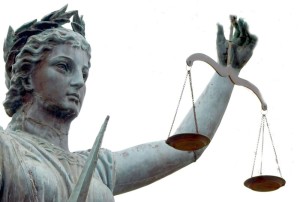By Taylor Anderson
On April 27, 2015, the Fourth Circuit issued its published opinion regarding the civil case In re Jenkins. The appellant, Matthew Alan Jenkins (“Jenkins”), appealed the decision of the lower courts, arguing that the Bankruptcy Administrator and the Trustee’s (collectively, “the Trustee”) complaint should have been dismissed as untimely. The Fourth Circuit sided with the appellant and applied Rule 2003(e) of the Federal Rules of Bankruptcy Procedure in order to determine when a creditors’ meeting concludes. The Court held that the meeting of the creditors “concluded” on the date the rescheduled meeting ended when counsel for Trustee failed to adjourn the meeting in compliance with Rule 2003(e); however, the Fourth Circuit declined to adopt the bright-line rule that the per se conclusion of the creditors’ meeting is the date that the trustee fails to strictly comply with Rule 2003(e) in adjourning the creditors’ meeting.
Factual Background
On April 11, 2012, Jenkins filed a petition for Chapter 7 bankruptcy relief. The Trustee convened a creditors’ meeting at which Jenkins testified as to disputed proceeds he had received; however Jenkins did not provide all the necessary information that Trustee needed from this meeting. As a result, counsel for the Trustee requested an extension of the deadline to file a complaint objecting to Jenkins’s discharge because another creditors’ meeting was needed. Pursuant to Rule 4004(b) of the Federal Rules of Bankruptcy Procedure, the bankruptcy court granted the Trustee’s request and extended the deadline to “sixty days beyond . . . whenever the 341 [creditors’] meeting is concluded.”
The next creditors’ meeting was scheduled to reconvene on July 11, however Jenkins did not attend this meeting. At a rescheduled creditors’ meeting on July 19, Jenkins appeared by telephone, but he again failed to provide the Trustee with the necessary information on that date, and so, before ending the telephonic meeting, counsel for the Trustee announced that she was “not going to conclude the meeting today.” Counsel further explained, “I am going to talk with the trustee and, if he determines that we can adjourn the meeting, we will file a notice of that, but officially the meeting is continued.” No notice of a continued meeting was ever filed, nor did the meeting ever reconvene.
On September 26, 2012, sixty-nine days after the July 19 creditors’ meeting, the Trustee filed a complaint, objecting to Jenkins’s discharge in bankruptcy. Jenkins asserted that the Trustee’s complaint was “barred by the applicable statute of limitations.” The bankruptcy court found the Trustee’s complaint timely and denied Jenkins a bankruptcy discharge. The district court affirmed, and Jenkins appealed.
Rule 2003 Speaks in Terms That Are Plainly Mandatory
Rule 2003 of the Federal Rules of Bankruptcy Procedure supplies the procedures by which a creditors’ meeting must progress. Specifically, Rule 2003(e) explains how a trustee is to conclude a creditors’ meeting. It provides, in its entirety: “The meeting may be adjourned from time to time by announcement at the meeting of the adjourned date and time. The presiding official shall promptly file a statement specifying the date and time to which the meeting is adjourned.”
Date of Creditors’ Meeting Conclusion
Jenkins asserted that the creditors’ meeting concluded on July 19, 2012, when the Trustee failed to adjourn the meeting to a stated later date and time. The Fourth Circuit agreed, holding that Trustee failed to follow Rule 2003(e)’s clear procedures.
In discussing Rule 2003(e)’s legislative history, the Fourth Circuit mentioned that Rule 2003(e) was amended in 2011 to add the requirement that “[t]he presiding official shall promptly file a statement specifying the date and time to which the meeting is adjourned” in order to prevent indefinite adjournment. To allow Trustee to prevail in this situation would allow him to do precisely what Rule 2003(e) seeks to prevent.
The Fourth Circuit found that Trustee undeniably violated Rule 2003(e). Though Trustee attempted to adjourn the creditors’ meeting on July 19, 2012, he failed either to announce the date and time of the adjourned meeting or to file a statement thereafter containing that information. Because Rule 2003(e) unambiguously requires these actions to effectuate an adjournment, the meeting was never adjourned. The Fourth Circuit said “because the meeting was never adjourned, we hold it was concluded” on July 19, 2012. Because Trustee filed the complaint sixty-nine days after July 19, 2012, this was an untimely filing and thus Trustee’s complaint should not have been considered by the lower court.
Fourth Circuit Declines to Adopt Bright-Line Approach
The Fourth Circuit made clear that it was stopping short of adopting a Rule 2003(e) “bright-line approach.” This approach states that the per se conclusion of the creditors’ meeting is the date that the trustee fails to strictly comply with Rule 2003(e) in adjourning the creditors’ meeting.
The Court discussed an example where a trustee fails to announce at the initial meeting the adjourned date and time, but promptly thereafter files a written notice setting forth that information. The Fourth Circuit stated that although the trustee in that situation is not in strict compliance with Rule 2003(e)’s twin requirements, such an action may not warrant an automatic declaration of the meeting’s conclusion as the date of the improperly adjourned meeting.
Judgment Reversed and Remanded
Because the Trustee did not comply with any part of Rule 2003(e), the judgment of the district court was reversed and the case was remanded for further proceedings.







